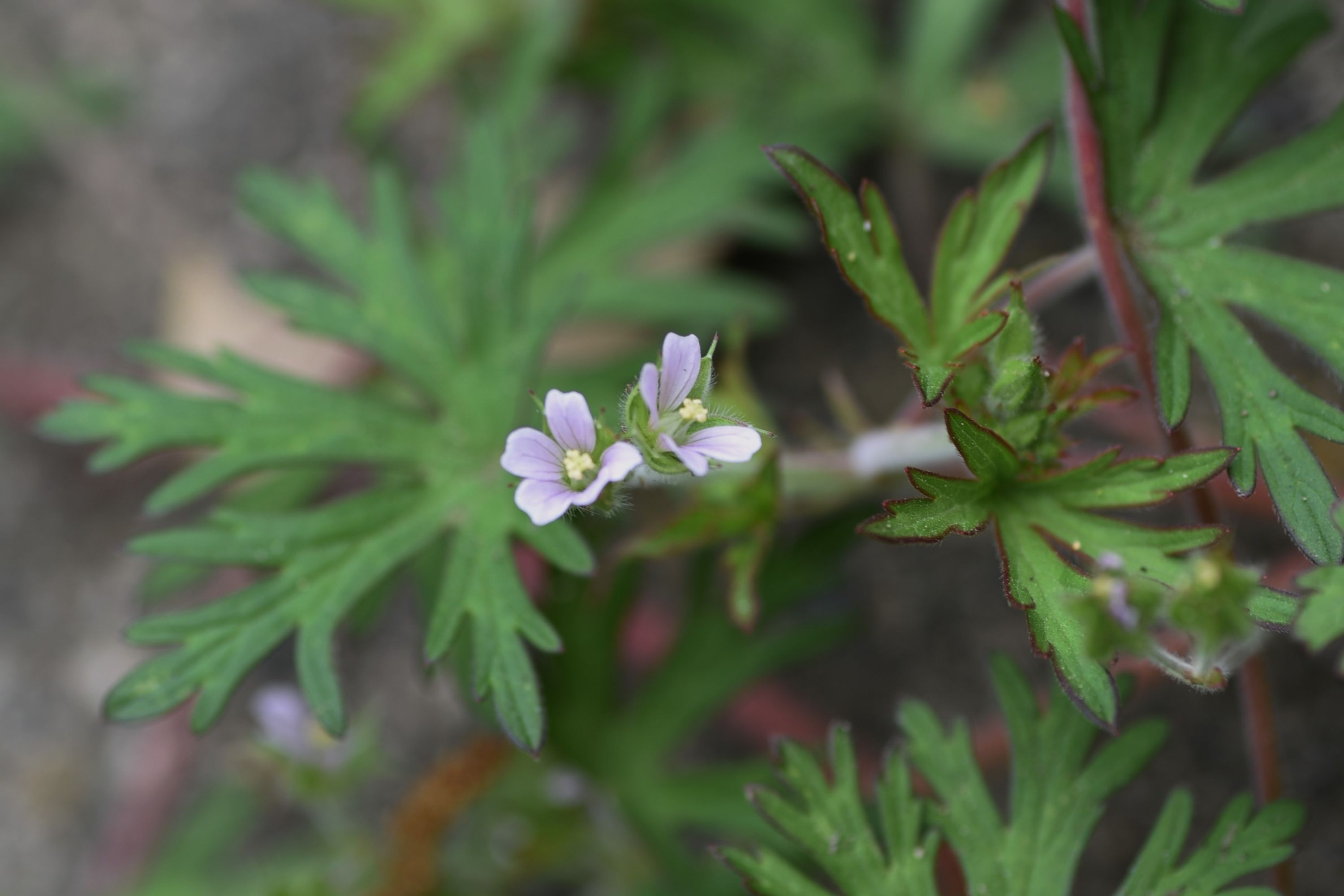Carolina crane's-bill
(Geranium carolinianum)

Description
Geranium carolinianum is a species of geranium known by the common name Carolina crane's-bill, or Carolina geranium. This species is native to North America, where it is widespread and grows in many types of habitat. There are two varieties; Geranium carolinianum var. carolinianum and the Geranium carolinianum var. sphaerospermum. This is a summer or winter annual herb. It can be considered invasive depending on the region, when it is found in the United States it is considered to be native. The USDA has specific symbols or coding labeled for each plant in their database. For the Geranium carolinianum, it is GECAC4. The plant has erect stems covered in spiky hairs. The color of the stem is typically pink to red. There are two leaves per node on each stem, called opposite leaves. The stem is not succulent and not nutrient-rich as a source of calories for herbivores. The palmate leaves are several centimeters wide, ranging between 3–8 cm. with a growth pattern of alternate, and usually divided into five segments which are each subdivided into elegantly pointed lobes and secondary lobes; they can be toothed or the leaves can be cleft. The leaf color can also appear grayish-green due to fine pubescent hairs that are present on the leaves. The inflorescence is a cluster of one to several small flowers. Each flower has five-pointed sepals which can be as long as the petals, and five-notched petals in shades of white, light pink to lavender. This is a distinguishing factor for discriminating G. carolinianum from other species of Geranium. The flowers form in short tight clusters which grow off the main stems. The anthers do not have nectar spurs. The carpels have hair and are fused together. There are five carpels and one pistil. The petals are rounded. The color of the sepals is green to brown; they are ovate. Despite being thin, dry and paper-like, the sepals are flexible. The plant does not persist after flowering. Flowers of G. carolinianum bloom in late May to July. They do not give off any strong aroma or scent to attract pollinators into visiting the flower, but rather depend on visual stimuli for insects to be attracted for the benefit of the naturally produced sap.
Taxonomic tree:







